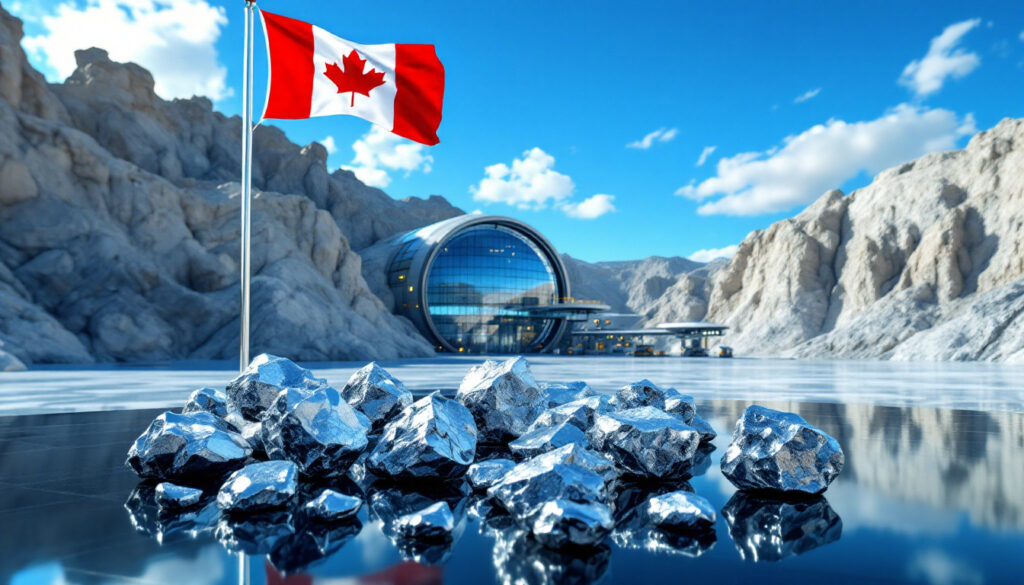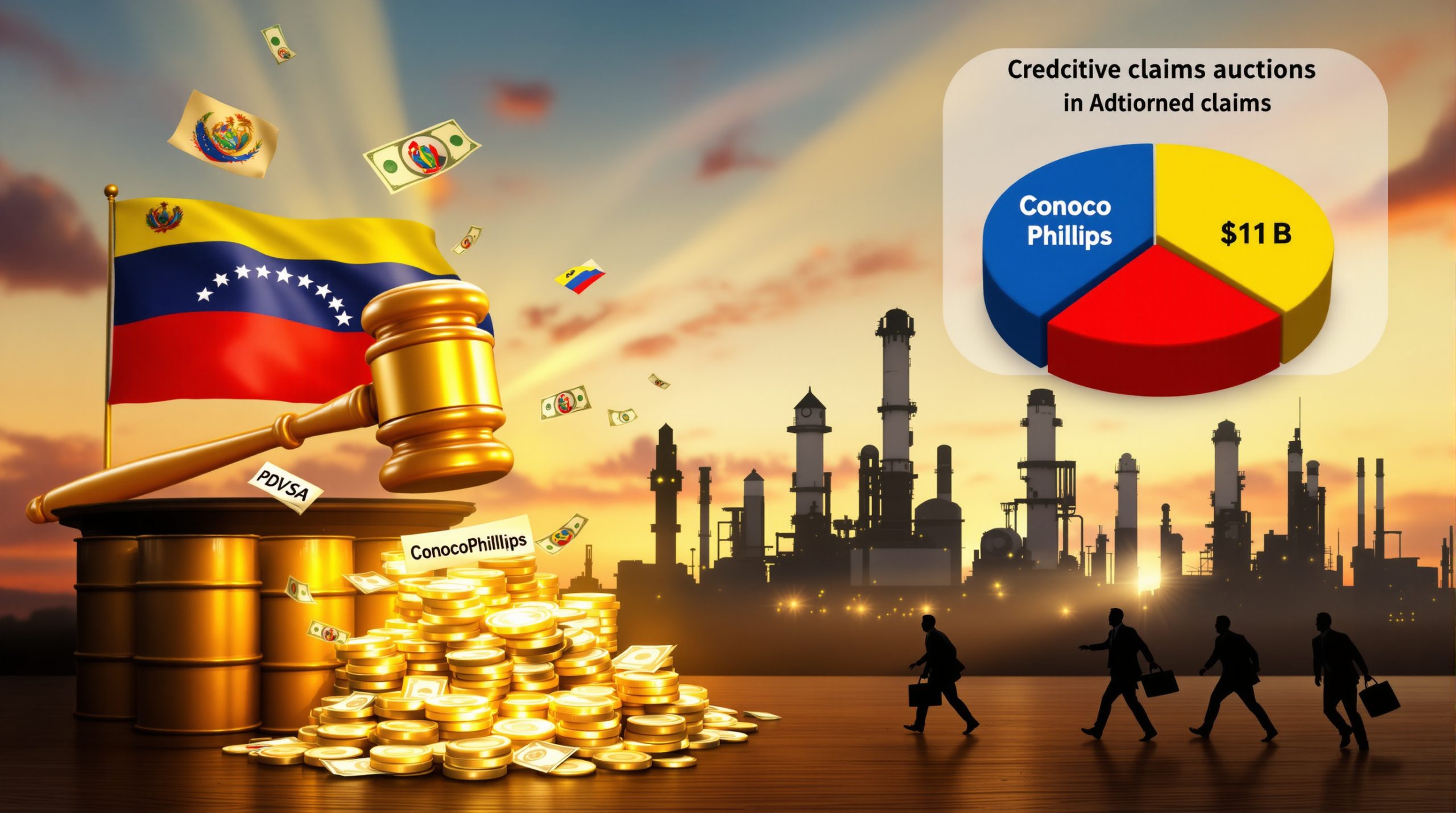Rio Tinto's Groundbreaking Gallium Extraction in Quebec: Building North America's Critical Mineral Supply Chain
Rio Tinto, in partnership with Indium Corporation, has achieved a remarkable breakthrough in critical minerals processing. In May 2025, the companies successfully completed the first extraction of primary gallium from bauxite processed at Rio Tinto's Vaudreuil alumina refinery in Quebec. This pioneering initiative represents the first step toward establishing a domestic North American supply chain for gallium, addressing a significant gap in the continent's critical minerals strategy.
"We are dedicated to strengthening the North American supply chain for gallium, a critical and strategic mineral essential for modern technology," stated Jérôme Pécresse, Rio Tinto Aluminium's CEO. "This achievement demonstrates our commitment to expanding beyond traditional mining to meet growing demand for technology-enabling materials."
The extraction takes place within Rio Tinto's existing aluminum production infrastructure, representing an innovative approach to critical mineral recovery that maximizes resource efficiency while minimizing environmental impact.
What Is Gallium and Why Is It Important?
Strategic Applications of Gallium in Modern Technology
Gallium has emerged as an indispensable element in today's high-tech world, with applications spanning multiple industries critical to economic development and national security. This silvery metal melts at just 29.8°C (85.6°F) – meaning it will literally melt in your hand – yet its compounds exhibit remarkable semiconductor properties that make it irreplaceable in modern electronics.
The critical mineral serves as a foundational material in:
- Defense systems: Essential for radar and satellite communications through gallium arsenide (GaAs) integrated circuits
- Telecommunications: Powering 5G network infrastructure and smartphone components
- Electric vehicles: Enhancing power conversion efficiency in charging systems and drivetrain components
- Computing hardware: Enabling high-performance processors in laptops and data centers
- Renewable energy: Boosting solar panel efficiency through gallium arsenide photovoltaic cells
- LED lighting: Creating highly efficient illumination through gallium nitride (GaN) technology
- Medical equipment: Supporting advanced imaging systems and diagnostic tools
This versatility makes gallium a cornerstone of both civilian technology and strategic defense capabilities, explaining its designation as a critical mineral by governments worldwide.
Current Global Supply Constraints
The gallium market faces significant challenges that make Rio Tinto's Quebec project particularly timely:
- Limited global production: Worldwide output hovers around 600 tonnes annually
- Supply concentration: China currently dominates global production, controlling approximately 80% of refined gallium supply
- Zero North American production: Despite growing demand, no domestic gallium production existed in North America before Rio Tinto's initiative
- Growing demand pressure: Electric vehicle adoption and renewable energy integration are accelerating gallium consumption
- Strategic vulnerability: Technology manufacturers and defense contractors face increasing supply uncertainty
"The concentration of critical mineral production creates significant vulnerabilities in global supply chains. Rio Tinto's gallium extraction project represents an important step toward supply diversification and regional security," noted Ross Berntson, CEO of Indium Corporation.
These constraints have elevated gallium to priority status in multiple national critical minerals strategies, including those of Canada, the United States, and the European Union.
What Makes Rio Tinto's Gallium Project Innovative?
Extraction Technology and Process Development
The Rio Tinto-Indium partnership has developed a proprietary approach to gallium recovery that represents a significant advancement in critical minerals processing:
- Source material innovation: Rather than dedicated mining operations, the process extracts gallium from bauxite processing waste streams at Rio Tinto's existing Vaudreuil alumina refinery
- Technical collaboration: Initial extraction was conducted at Indium Corporation's specialized R&D facility in Rome, New York
- Circular economy approach: The process transforms what would otherwise be waste material into valuable technology metals
- Infrastructure leverage: By utilizing existing alumina refining infrastructure, the approach minimizes additional environmental footprint
- Proprietary techniques: The partners have developed specialized extraction methodologies optimized for the specific composition of Quebec bauxite residue
This approach stands in stark contrast to traditional gallium production, which typically occurs as a byproduct of zinc processing or direct mining activities with significantly higher environmental impacts.
Phased Development Approach
Rio Tinto and Indium have implemented a methodical, four-stage development plan to minimize technical risk and optimize commercial outcomes:
| Phase | Description | Status | Timeline | Capacity |
|---|---|---|---|---|
| 1 | Initial extraction proof-of-concept | Completed | May 2025 | Laboratory scale |
| 2 | Refinement of extraction techniques | In progress | 2025-2026 | Pilot scale |
| 3 | Demonstration plant construction | Planned | 2026-2027 | 3.5 tonnes/year |
| 4 | Commercial-scale facility | Projected | 2027+ | 40 tonnes/year |
This measured approach allows the partners to refine their extraction techniques, optimize recovery rates, and scale operations in alignment with market demand and technological developments.
What Are the Potential Economic Impacts?
North American Supply Chain Strengthening
The establishment of primary gallium production in Quebec creates multiple economic benefits extending well beyond the immediate project:
- Manufacturing enablement: Domestic gallium supply supports downstream high-tech manufacturing across North America
- Supply chain resilience: Reduced reliance on imports enhances business continuity for technology companies
- National security enhancement: Secure gallium supply strengthens defense industrial capabilities
- Regional development: Creates specialized jobs in Quebec's Saguenay-Lac-Saint-Jean region
- Technology ecosystem growth: Attracts complementary businesses in the semiconductor and advanced materials sectors
The project aligns perfectly with Quebec's strategic focus on critical minerals energy transition as an economic development driver, leveraging the province's existing expertise in aluminum production to move up the value chain into technology metals.
Market Position and Production Targets
Rio Tinto's commercial ambitions for the gallium project are substantial:
- Production target: 40 tonnes per annum from the planned commercial facility
- Market significance: Representing approximately 5-10% of current global gallium production
- Strategic portfolio expansion: Complementing Rio Tinto's existing production of other critical minerals
- Regional advantage: Leveraging Quebec's renewable hydroelectric power for reduced carbon footprint
- Value chain positioning: Potential to supply both North American and European technology manufacturers
"Our joint efforts will help position North America as a leader in critical material production, supporting technological innovation while enhancing supply chain security," said Ross Berntson of Indium Corporation.
The timing of Rio Tinto's market entry coincides with projected gallium demand growth driven by electric vehicle adoption, 5G infrastructure expansion, and increased defense spending.
How Is Government Support Facilitating This Project?
Quebec Government Partnership
The gallium extraction initiative benefits from strategic alignment with Quebec's provincial priorities:
- Direct financial support: The Quebec government is providing funding assistance for the 3.5-tonne demonstration plant
- Policy alignment: The project supports Quebec's Plan for Development of Critical Minerals 2020-2025
- Regulatory coordination: Streamlined permitting process for critical minerals projects
- Infrastructure support: Access to Quebec's world-class hydroelectric power network
- Research collaboration: Partnerships with provincial research institutions
This government-industry collaboration exemplifies Quebec's commitment to developing sustainable mining transformation rather than simply exporting raw materials.
Strategic Minerals Policy Framework
The initiative resonates with broader North American critical minerals strategies:
- Canada-U.S. Joint Action Plan on Critical Minerals Collaboration supports cross-border supply chain development
- U.S. Defense Production Act authorizations for critical minerals enhance market opportunities
- Clean energy transition policies drive demand for gallium in renewable technologies
- Semiconductor manufacturing initiatives in both countries increase domestic demand
- Reshoring efforts by technology companies create ready markets for locally-produced gallium
These coordinated policy frameworks create a supportive environment for Rio Tinto's investment while addressing broader economic security objectives.
What Other Critical Minerals Is Rio Tinto Developing?
Diversified Critical Minerals Portfolio
Rio Tinto has strategically expanded beyond traditional bulk commodities into a diversified portfolio of technology-enabling minerals:
- Scandium: Produced at its Sorel-Tracy titanium dioxide facility, enhancing aluminum alloys for aerospace and 3D printing
- Tellurium: Recovered from copper refining operations at Kennecott, Utah, supporting solar photovoltaics
- Lithium: Extracted from brine at boron operations in California's Mojave Desert, essential for battery applications
- Molybdenum: Produced as a byproduct at copper mines, strengthening steel alloys for infrastructure
"By leveraging our existing operations to produce critical minerals, we create additional value while supporting technological advancement and the clean energy transition," notes Jérôme Pécresse of Rio Tinto Aluminium.
This diversification strategy positions Rio Tinto as a comprehensive supplier of materials needed for the technology-driven economy, rather than simply a traditional mining company.
Research and Development Initiatives
Rio Tinto continues to explore innovative approaches to critical minerals recovery:
- Circular economy research: Identifying additional valuable elements in processing waste streams
- Advanced extraction technologies: Developing more efficient recovery methods for trace elements
- Sustainable processing: Reducing energy and chemical inputs for mineral extraction
- Byproduct valorization: Finding commercial applications for processing residues
- Cross-industry partnerships: Collaborating with technology specialists on new applications
These R&D efforts reflect a fundamental shift in mining industry evolution – from focused extraction of primary metals to comprehensive resource utilization that maximizes value while minimizing environmental impact.
What Does This Mean for the Future of Critical Minerals?
Industry Transformation Potential
The Rio Tinto-Indium partnership represents a potential paradigm shift in how critical minerals are sourced:
- Redefining "mining": Extracting value from existing waste streams rather than new excavation
- Operational synergies: Leveraging established infrastructure to minimize capital requirements
- Environmental footprint reduction: Avoiding additional land disturbance through secondary recovery
- Value chain integration: Bringing processing capabilities closer to end-users
- Technological convergence: Blurring boundaries between mining, chemical processing, and advanced materials
This model could inspire similar initiatives across the mining industry, particularly as sustainability considerations and circular economy principles gain prominence in corporate strategy.
Long-Term Strategic Implications
Looking ahead, several trends emerge from this development:
- Secondary extraction growth: Mining companies increasingly view waste streams as valuable resources
- Regionalization of supply chains: Critical minerals production moving closer to manufacturing centers
- Technology integration: Advanced separation and recovery technologies becoming core mining competencies
- Policy-industry alignment: Government strategies increasingly shaping mining investment decisions
- Mineral recovery hierarchy: Companies developing comprehensive approaches to maximize material recovery
"The future of mining isn't just about digging new holes – it's about extracting maximum value from every ton of material we process," observed an industry analyst familiar with Rio Tinto's breakthrough. "Projects like the gallium extraction initiative represent the leading edge of this transformation."
As these trends accelerate, the distinction between mining, refining, and materials technology will continue to blur, creating new competitive landscapes and strategic opportunities.
FAQ: Rio Tinto's Gallium Extraction Project
When will Rio Tinto begin commercial production of gallium?
While specific timelines remain flexible, Rio Tinto is following a structured development pathway toward commercial production. The demonstration plant in Saguenay-Lac-Saint-Jean represents the critical intermediate step, with construction expected to begin in 2026. Assuming successful operation, the 40-tonne commercial facility would follow, potentially entering production by 2028. Market conditions and technological refinements may accelerate or adjust this timeline.
How does gallium extraction impact the environment?
Rio Tinto's approach offers significant environmental advantages over traditional gallium production methods. By extracting gallium from existing bauxite processing streams, the process eliminates the need for dedicated mining operations. It also diverts material from waste deposits, reducing the overall environmental footprint of aluminum production. The process operates within Quebec's hydroelectric-powered infrastructure, further minimizing carbon emissions compared to extraction in regions reliant on fossil fuels.
What role does Indium Corporation play in this partnership?
Indium Corporation contributes specialized technical expertise in critical minerals processing and purification. The initial extraction was conducted at their R&D facility in Rome, New York, leveraging their extensive experience in metal refining and semiconductor materials. Their participation brings complementary capabilities to Rio Tinto's mining and processing expertise, creating a more robust partnership capable of addressing the full value chain from extraction to final material specifications.
How does this project compare to other global gallium producers?
At its projected 40-tonne annual capacity, Rio Tinto's commercial facility would represent approximately 5-10% of current global gallium output, making it a significant market participant. Unlike existing producers concentrated primarily in China, Rio Tinto's operation would be powered by renewable hydroelectric energy, resulting in a substantially lower carbon footprint. The North American location also provides unique supply chain security advantages for regional technology manufacturers and defense contractors.
What other critical minerals could be extracted using similar methods?
While specific development plans remain confidential, Rio Tinto has indicated interest in applying similar circular economy principles to recover additional technology metals from various process streams. Potential candidates include rare earth elements, germanium, indium, and other semiconductor materials present in trace amounts within bauxite and other mineral processing operations. The company's R&D initiatives continue to explore these possibilities, applying advanced analytical techniques to identify economically viable recovery opportunities.
Disclaimer: This article contains forward-looking statements regarding Rio Tinto's gallium production capabilities, timelines, and market positioning. Actual developments may differ due to technological challenges, market conditions, regulatory changes, or other factors. All production targets and timelines should be considered projective rather than definitive commitments.
Want to Capitalise on the Next Major Mineral Discovery?
Stay ahead of the market with Discovery Alert's proprietary Discovery IQ model, which instantly notifies investors about significant ASX mineral discoveries, turning complex data into actionable insights. Explore why historic discoveries generate substantial returns by visiting our dedicated discoveries page and begin your 30-day free trial today.




